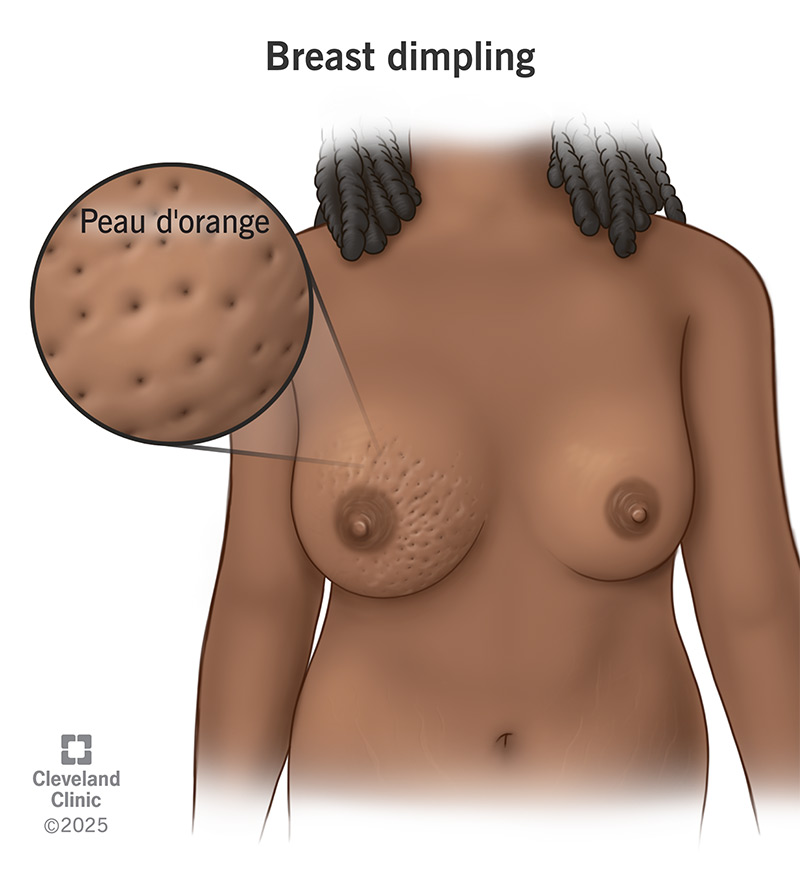Breast dimpling is a change in the skin on your breast. Your skin may have tiny indentations or look rough and uneven. Breast dimpling can be a symptom of a benign breast disorder like mastitis. It may also be a symptom of a breast cancer, including inflammatory breast cancer or invasive ductal carcinoma.
Advertisement
Cleveland Clinic is a non-profit academic medical center. Advertising on our site helps support our mission. We do not endorse non-Cleveland Clinic products or services. Policy

Breast dimpling is when a section of skin on your breast has tiny indentations that look like dimples. The indentations may make that section of skin resemble a piece of orange peel (peau d’orange). Your breast skin may look rough or uneven.
Advertisement
Cleveland Clinic is a non-profit academic medical center. Advertising on our site helps support our mission. We do not endorse non-Cleveland Clinic products or services. Policy
The change in your breast skin may be a breast cancer symptom. But other breast disorders can also cause breast dimpling. Any change in your breast can be a cause for concern. Talk to a healthcare provider if you have breast dimpling. They’ll find the cause and recommend any treatment you may need.
Breast dimpling may be a symptom of benign breast disease. Certain types of breast cancer can also cause this symptom.
Benign breast diseases are noncancerous conditions that may cause symptoms like breast dimpling. Those conditions include:
Breast dimpling is a common symptom of the following types of breast cancer:
Advertisement
The treatment depends on the condition that causes a change in your breast skin. For example, if you have mastitis, a healthcare provider may recommend lymphatic drainage massage. If you have breast cancer, treatment may be breast cancer surgery. You may also receive chemotherapy or radiation therapy.
Breast dimpling doesn’t go away on its own. Just as important, breast dimpling can be a breast cancer symptom. Without treatment, breast cancer can spread to other parts of your body.
Breast dimpling isn’t normal. It’s a symptom of changes in your breast. Those changes may be a benign breast disorder or breast cancer. You should talk to a healthcare provider if you have breast dimpling.
Breast dimpling and breast puckering are the same thing. Dimpling and puckering refer to tiny indentations on your breast skin.
It’s natural to have concerns when breast dimpling makes your breasts look or feel different. This change doesn’t necessarily mean you have breast cancer. But it’s a reason to talk to a healthcare provider. They’ll discuss your symptoms with you. They may do tests to learn more about your breast health.
Advertisement
From routine pelvic exams to high-risk pregnancies, Cleveland Clinic’s Ob/Gyns are here for you at any point in life.

Last reviewed on 07/01/2025.
Learn more about the Health Library and our editorial process.